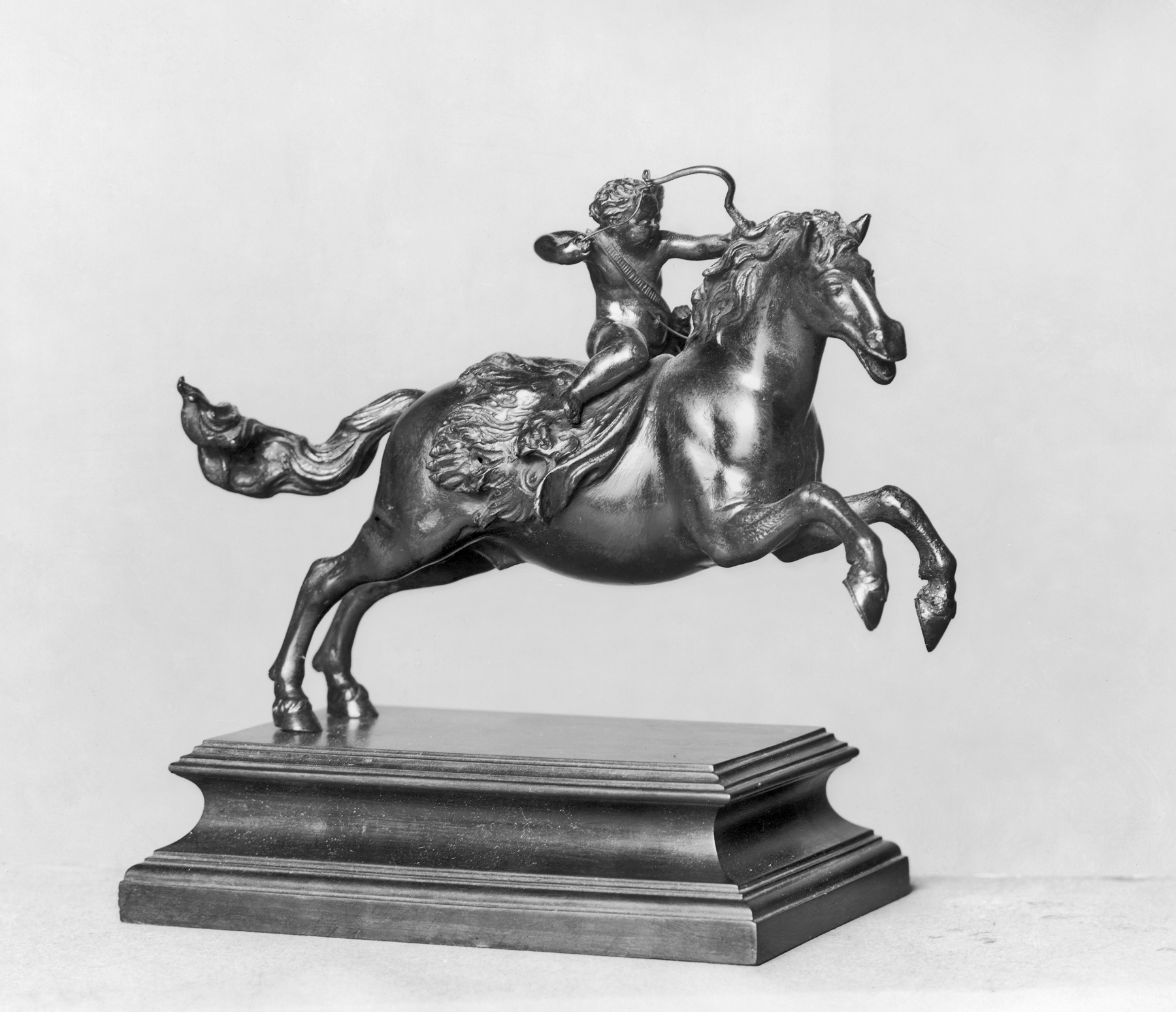Cupid with a Bow on Horseback
(Baroque Europe )
Inspired by love poetry, the notion of Cupid as a hunter imagines the experience of falling in love as the result of an onrushing attack. Nobody is safe from Cupid's bow. His steed is depicted in full gallop, its front hooves lifted, a wonderful display of baroque energy and movement.
The Italian sculptor Francesco Fanelli was active in England from about 1630 through 1642. In his treatise on architecture, he proudly described himself as "sculptor to the king of Great Britain." This is one of the models that he and his workshop produced in significant numbers during his years working for Charles I and his court; the version in the king's collection may have been the prototype.
Provenance
Provenance (from the French provenir, 'to come from/forth') is the chronology of the ownership, custody, or location of a historical object. Learn more about provenance at the Walters.
Jacques Seligmann, Paris, by purchase; Henry Walters, Baltimore, 1911, by purchase; Walters Art Museum, 1931, by bequest.
Conservation
| Date | Description | Narrative |
|---|---|---|
| 11/1/1958 | Treatment | cleaned |
| 1/18/1988 | Treatment | cleaned |
| 1/19/1988 | Examination | examined for condition |
Geographies
United Kingdom, England (Place of Origin)
Measurements
H: 7 3/4 × W: 8 × D: 4 1/2 in. (19.7 × 20.3 × 11.5 cm)
Credit Line
Acquired by Henry Walters, 1911
Location in Museum
Accession Number
In libraries, galleries, museums, and archives, an accession number is a unique identifier assigned to each object in the collection.
In libraries, galleries, museums, and archives, an accession number is a unique identifier assigned to each object in the collection.
54.146


